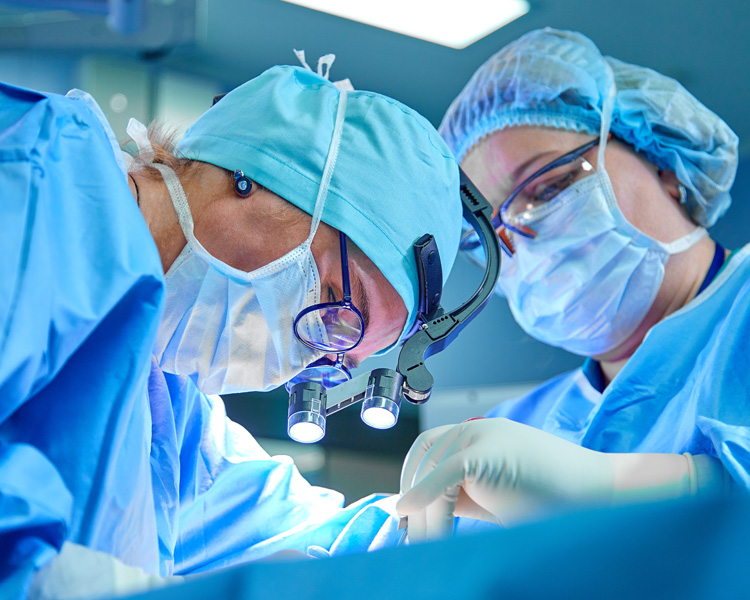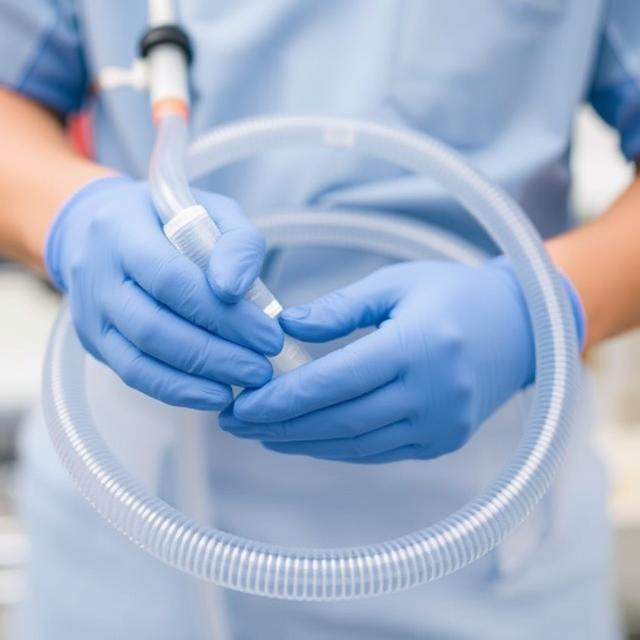-



How To Effectively Clean And Maintain Your Suction Connecting Tube?
Views: 0 Author: Site Editor Publish Time: 2025-04-09 Origin: Site

In the realm of medical and laboratory equipment, the suction connecting tube plays a pivotal role in ensuring cleanliness and safety. With its widespread use in various settings, understanding its proper cleaning and maintenance becomes essential. This article delves into the best practices for cleaning and maintaining suction connecting tubes, ensuring they remain in optimal condition for their crucial functions.
Understanding the importance of cleaning and maintenance
The suction connecting tube is an integral part of many medical and laboratory setups. Its primary function is to facilitate the movement of fluids, be it in suctioning procedures or in laboratory experiments. The importance of cleaning and maintenance cannot be overstated. Residues left in the tube can lead to contamination, affecting the results of experiments or the safety of medical procedures.
Moreover, a well-maintained suction connecting tube ensures longevity. Neglecting its upkeep can lead to wear and tear, resulting in the need for replacements and incurring additional costs. In medical settings, ensuring the cleanliness of such equipment is not just a matter of efficiency but also of patient safety. Contaminated tubes can introduce pathogens, leading to infections or other complications.
In laboratory settings, the accuracy of experiments can be compromised if the equipment, including suction connecting tubes, is not maintained properly. Contaminated tubes can introduce variables that skew results, leading to erroneous conclusions.
Given the critical role that suction connecting tubes play in both medical and laboratory environments, it’s evident that their cleaning and maintenance are paramount. A proactive approach to their upkeep ensures that they function effectively, safely, and efficiently.
Types of suction connecting tubes
Suction connecting tubes are essential components in various medical and laboratory setups, facilitating the movement of fluids. Understanding the different types of these tubes is crucial for effective cleaning and maintenance.
Silicone tubes: These tubes are known for their flexibility and resistance to high temperatures. Silicone tubes are often used in settings where the tube might come into contact with heat sources. Their non-reactive nature makes them a preferred choice in many medical and laboratory applications.
Plastic tubes: Made from materials like PVC or polypropylene, plastic tubes are lightweight and cost-effective. They are commonly used in situations where the tube might be disposed of after a single use. However, their susceptibility to certain chemicals means that careful consideration is needed when choosing cleaning agents for these tubes.
Metal tubes: Typically made from stainless steel or other alloys, metal tubes are durable and resistant to wear and tear. They are often used in high-pressure applications or in environments where sterility is paramount. Cleaning metal tubes require specialized agents to prevent corrosion and maintain their integrity.
Glass tubes: Glass tubes are transparent, allowing for easy visualization of the contents. They are commonly used in laboratory settings for experiments. Their smooth surfaces make them easy to clean, but they are fragile and can break if not handled with care.
Each type of suction connecting tube has its unique properties, advantages, and disadvantages. Understanding these differences is essential for ensuring the longevity and optimal performance of the tubes in various applications.
Steps for cleaning suction connecting tubes
Maintaining the cleanliness of suction connecting tubes is paramount for their longevity and optimal performance. Here are the detailed steps for effectively cleaning these tubes:
Preparation: Before diving into the cleaning process, it’s essential to gather all the necessary materials. This includes a suitable cleaning solution, typically one that is compatible with the tube material. For silicone tubes, a mild detergent or a specialized silicone cleaner is recommended. Plastic tubes might require a PVC-safe cleaner, while metal tubes can be cleaned with a metal-safe solution. Glass tubes, being more delicate, can be cleaned with a glass-safe detergent.
Disassembly: If the suction connecting tube is part of a larger apparatus, it’s crucial to detach it carefully. This ensures that no damage is inflicted on the tube or the apparatus. Always refer to the manufacturer’s guidelines for the correct disassembly process.
Flushing: Once the tube is disassembled, the next step is to flush it with a suitable solvent. This helps in removing any residual fluids or contaminants. For instance, a saline solution might be used for medical tubes, while distilled water can be used for laboratory tubes. The flushing should be done gently to avoid damaging the tube.
Soaking: After flushing, the tube should be soaked in the cleaning solution. The duration of the soaking will depend on the type of solution used and the level of contamination. It’s essential to ensure that the entire length of the tube is submerged in the solution for thorough cleaning.
Scrubbing: For tubes with stubborn residues or contaminants, gentle scrubbing might be necessary. Using a soft brush, preferably one designed for cleaning tubes, can help in dislodging any particles stuck inside the tube. It’s crucial to be gentle during this process to avoid damaging the tube’s surface.
Rinsing: After the tube has been soaked and scrubbed, it’s time to rinse it thoroughly with clean water. This step is vital to ensure that no cleaning solution residues are left in the tube, which could be harmful in its next use.
Drying: Once rinsed, the tube should be dried properly. Depending on the material, air drying or using a gentle stream of air can be effective. For glass tubes, ensuring they are completely dry is crucial to prevent breakage.
Reassembly: After the tube has dried, it can be reassembled with the apparatus. Again, it’s essential to follow the manufacturer’s guidelines to ensure proper reassembly without causing any damage to the tube or the apparatus.
By following these detailed steps, suction connecting tubes can be cleaned effectively, ensuring their longevity and optimal performance in various applications.
Best practices for maintaining suction connecting tubes
Ensuring the longevity and optimal performance of suction connecting tubes requires consistent and careful maintenance. Here are some best practices to follow:
Regular inspection: It’s essential to frequently check the tubes for any signs of wear, tear, or damage. Look for cracks, discoloration, or any other abnormalities. If any issues are detected, it’s advisable to replace the tube promptly to avoid complications.
Avoiding harsh chemicals:While it might be tempting to use strong chemicals for cleaning, it’s crucial to avoid substances that can degrade the material of the tube. Always refer to the manufacturer’s recommendations for cleaning agents that are safe for the specific type of tube.
Proper storage:When not in use, suction connecting tubes should be stored in a clean, dry place. Avoid coiling the tubes too tightly, as this can cause kinks or damage over time. Using hangers or storage racks can be beneficial in maintaining the tube’s shape.
Minimizing exposure to extreme conditions:If the tubes are used in environments with extreme temperatures or conditions, it’s essential to ensure that they are suitable for such settings. For instance, some tubes might not be resistant to high temperatures or might be prone to damage from certain chemicals.
Following manufacturer’s guidelines:Always adhere to the instructions and recommendations provided by the manufacturer. They are the best source of information on the proper care and maintenance of their products.
By incorporating these best practices into the routine care of suction connecting tubes, one can ensure their optimal performance and longevity, thereby avoiding unnecessary costs and complications.
Conclusion
In conclusion, the importance of maintaining suction connecting tubes in optimal condition cannot be overstated. Their role in ensuring safety, efficiency, and accuracy in various settings, from medical to laboratory environments, is paramount. Proper cleaning and maintenance not only extend the lifespan of these tubes but also ensure that they function as intended, without any compromise. Adhering to best practices and understanding the specific requirements of different types of tubes is essential. By doing so, one can ensure that these vital components continue to serve their purpose effectively, safeguarding the integrity of the processes they are a part of.
Related Products
content is empty!
Related News
content is empty!
CONTACT US
NO.176, Gaoxin 5th Road, High-tech Industrial Park, Rizhao City276800, Shandong Province, China +86-13396234532 +86-13396234532Copyright © 2023 ZhenFu Group All Rights Reserved. Technology By leadong.com | Sitemap | Privacy Policy














